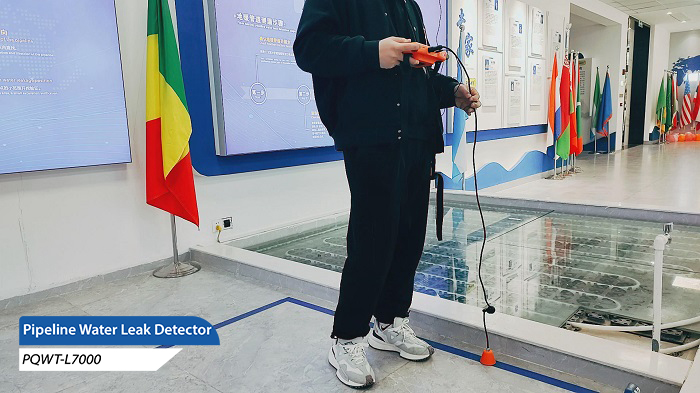In the veins of a city, underground pipeline network is like a blood vessel, carrying important functions such as water supply and drainage. However, with the long-term use and aging of the network, the leakage problem is becoming more and more prominent, which not only causes huge economic losses, but also often triggers safety accidents, posing a serious threat to people's lives and social stability.

According to statistics, the country's annual loss of water due to leakage of underground pipeline network up to 8.3 billion cubic meters, water supply enterprises thus suffered economic losses of up to 20 billion yuan. What is more worrying is that in some places, the leakage rate is even more than 20%, a figure much higher than the international average. The traditional means of leakage detection relies mainly on manual inspection, a method that not only requires a large investment in manpower and time, but also does not work well. With the increasing aging of underground pipelines, the rate of increase of leakage points has exceeded the rate of detection, resulting in a high leakage rate.
The seriousness of the leakage problem is not only in terms of economic losses, it is an important issue for safety and the environment. Leakage from underground pipeline networks may lead to safety accidents such as road cavities, ground settlement, subsidence and even pipe bursts. These accidents may not only cause traffic safety problems, regional water outages and disruptions to residents' normal lives, but may also result in costly civil damages and complex aftermaths. At the same time, leakage may also lead to waste of water resources and environmental pollution, causing irreversible damage to society and ecology.
In the face of this serious challenge, the development and application of leakage detection technologies for underground pipeline networks are particularly important. These technologies mainly rely on advanced non-destructive testing technology and sensor technology, through real-time monitoring and analyzing the operation status of pipelines, timely detection and location of leakage points. At present, acoustic wave detection, electromagnetic detection, infrared thermal image detection and other methods have been widely used in underground pipeline network leakage detection.
Acoustic wave detection technology pipeline leak detector utilizes the propagation characteristics of acoustic waves in the medium, through the detection of acoustic waves in the pipeline reflection and transmission, you can determine whether there is a leak in the pipeline. Electromagnetic detection technology utilizes the principle of electromagnetic induction to detect leaks by measuring the magnetic field changes around the pipeline. Infrared thermal detection technology is to capture the temperature distribution difference on the surface of the pipeline, so as to determine whether there is a leakage phenomenon.
The application of these new technologies not only improves the accuracy and efficiency of leakage detection, but also greatly reduces the cost and risk of manual inspection. At the same time, with the continuous progress and improvement of technology, it is believed that the problem of leakage of underground pipe network will be better solved in the future.
However, we must also recognize that the solution to the problem of underground pipe network leakage is not an overnight solution. In addition to the research and development and application of technology, it is also necessary to strengthen the daily maintenance and management of pipe networks to improve the safety and reliability of pipe networks. At the same time, the government and the community should also strengthen the concern and investment on the leakage problem of underground pipeline network, and jointly promote the solution of the problem.
In summary, leakage detection of underground pipeline network is an important issue concerning safety, economy and environment. By applying new technologies and strengthening management, we are confident that we can gradually solve this problem and escort the sustainable development of the city and the happy life of the citizens.








